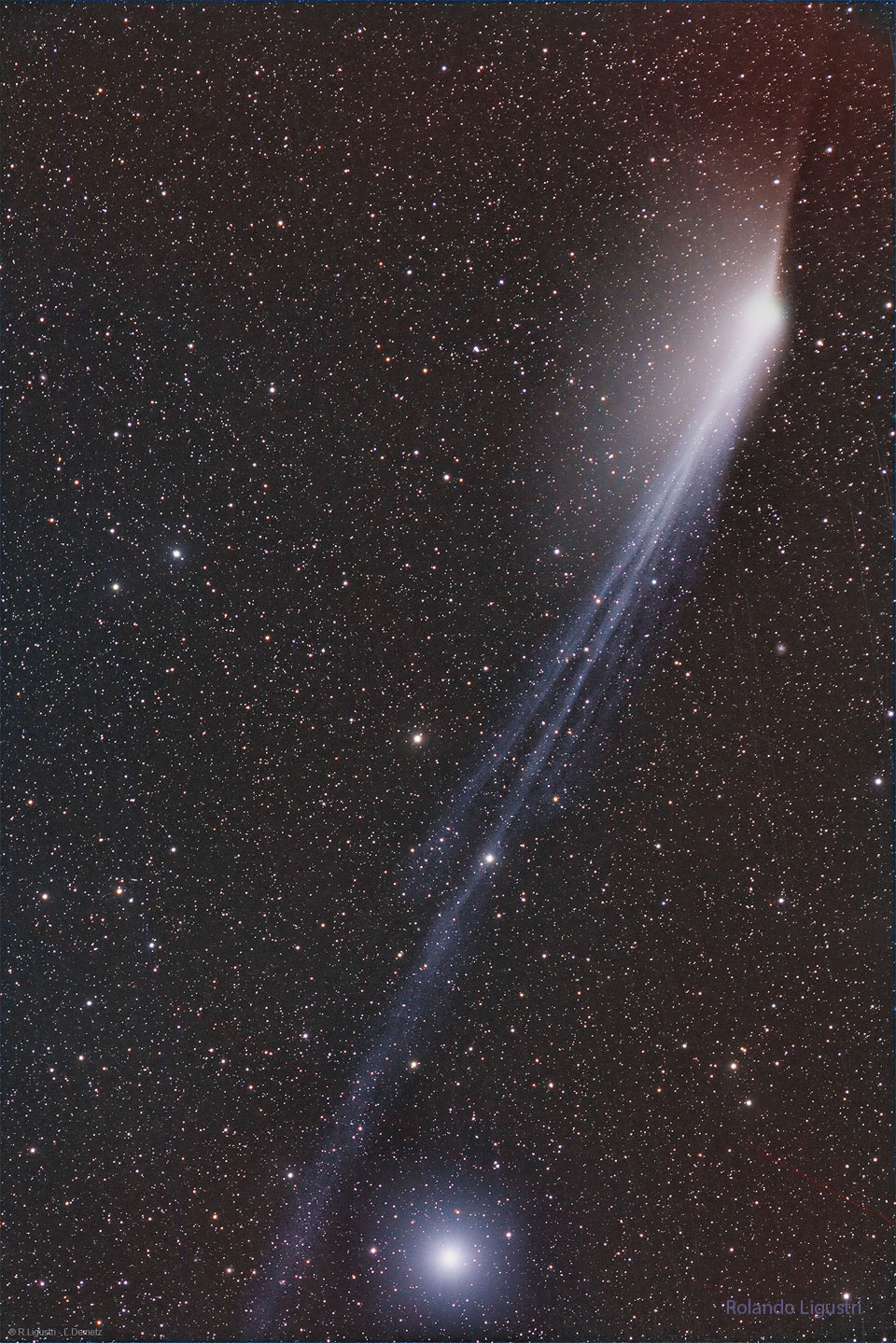



Why does
Comet Pons-Brooks
now have tails pointing in opposite directions?
The most
spectacular tail is the blue-glowing
ion tail that is visible flowing down the image

In this vivid and dynamic portrayal, dinosaurs look upward in astonishment at the dazzling sight of a comet streaking through the vibrant, psychedelic sky. The image bursts with a riot of colors and swirling patterns, evoking a profound sense of awe and enchantment. The dinosaurs themselves are depicted in bold, exaggerated forms, with their scales and features intricately detailed amidst the chaotic beauty of the cosmic scene.
Read More